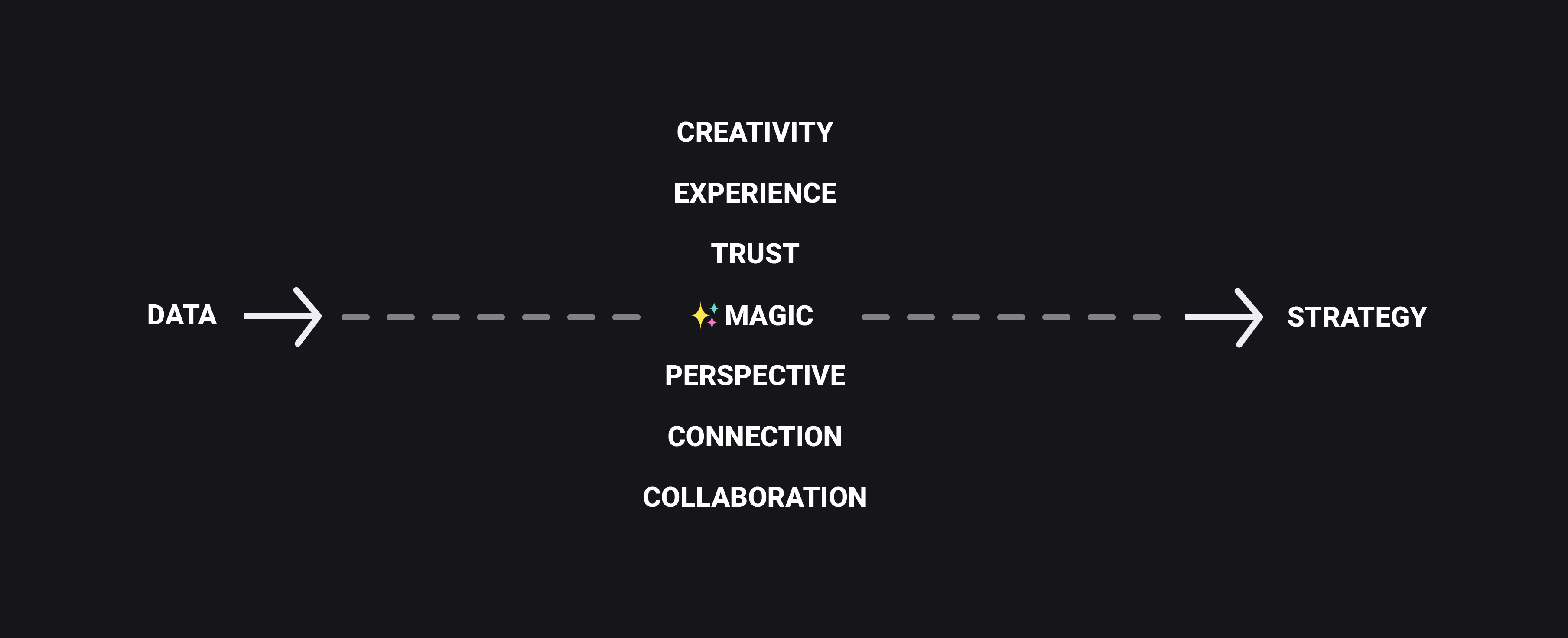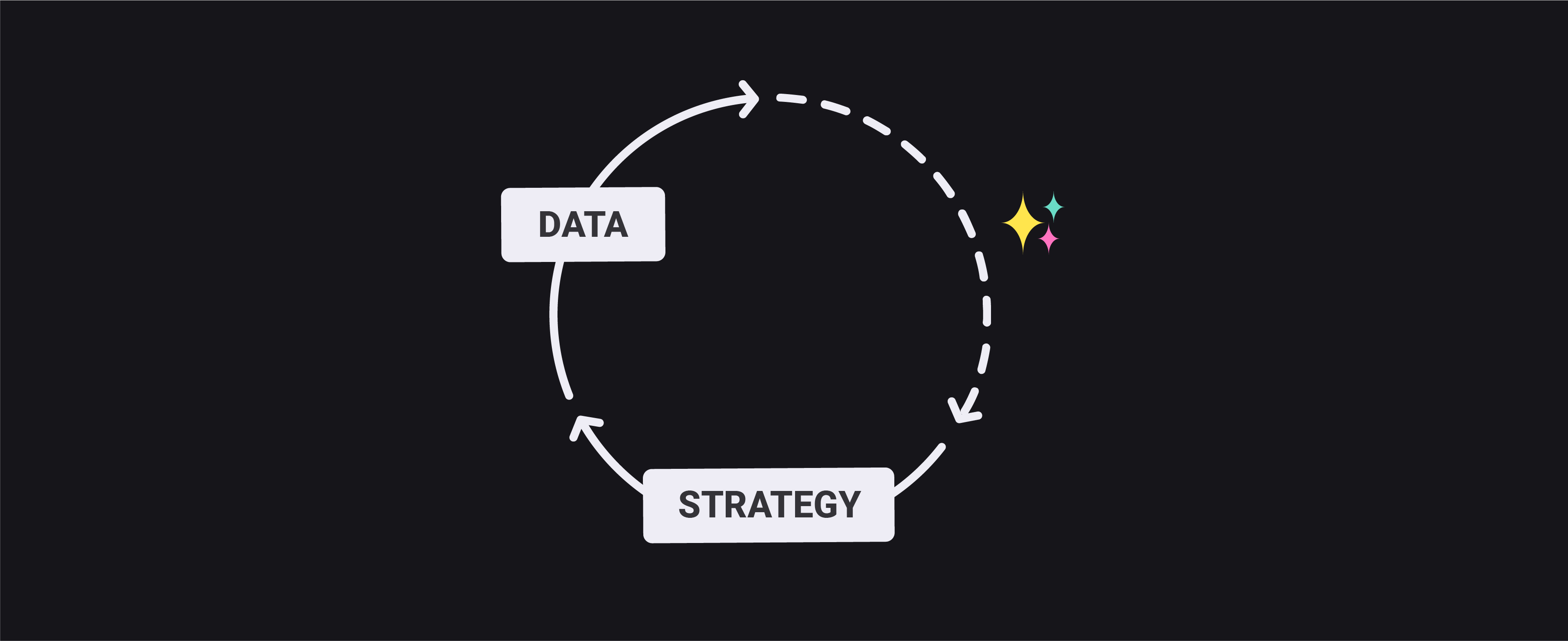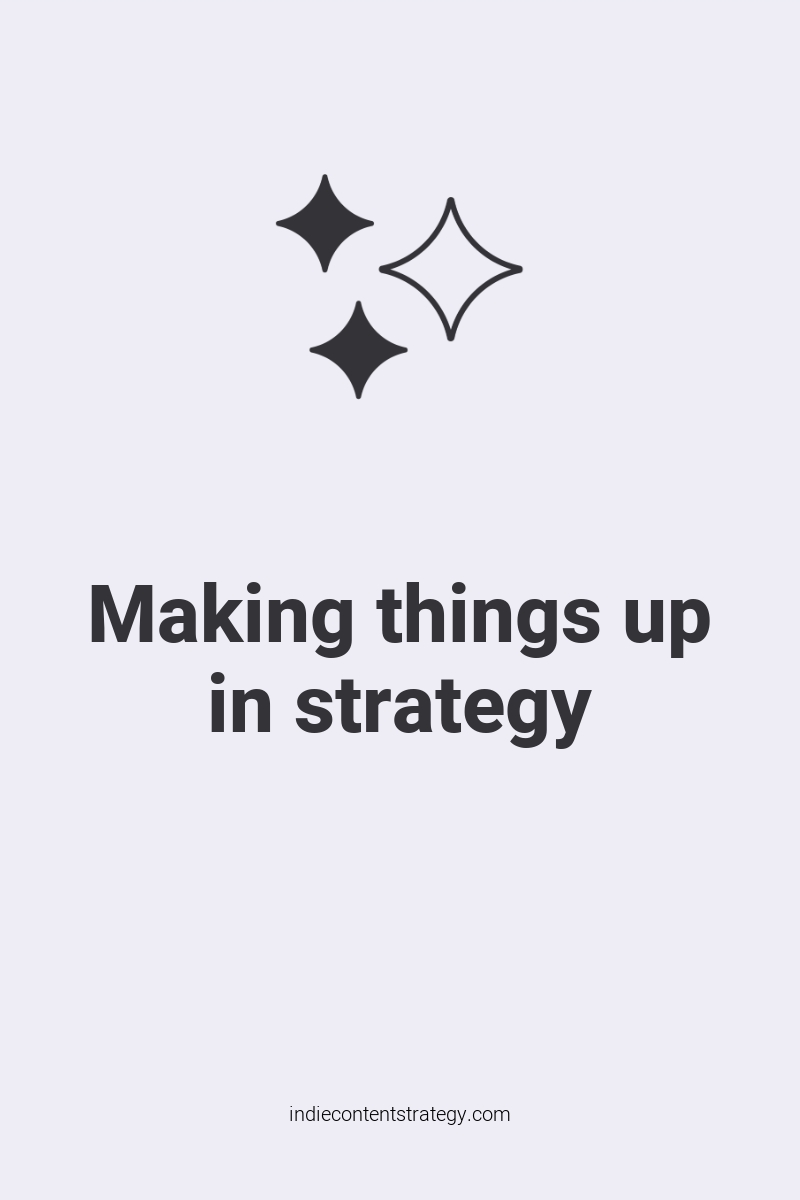Strategy and winging it are not mutually exclusive. If a strategist tells you their work is strictly based on facts and data, they are either not very good at their job yet, or glossing over the parts that make them feel insecure. Or both.
It’s hard to say “I don’t know for sure”, but uncertainty is a part of every (content) strategy. Not only, but always when it comes to startups. And I think we need to talk about what that exactly means.
Data against uncertainty?
We tend to think that collecting data will make us feel safe in our choices. We’re frantically looking for data-based validation of our ideas. We want to make data-driven decisions, as that sounds like we’re working strategically.
We’re collecting all kinds of data in the hope of finding answers:
- Insights from looking at competitors, the market or possible channels
- Research data from interviews, surveys or observations
- KPIs of our business – sign-ups, conversion rates, churn,..
- Behavioral analytics data: What are people doing in our app? What pages are they visiting, how long are they staying?
- Search volume data: How many people are searching for something on Google?
- …and probably some vanity metrics 😉
But why do we still feel insecure about actually making strategic decisions, even when we have all that data? Isn’t it enough data? What are we missing here? (Are we stupid, after all?) This feeling drove me nuts, and I bet it’s eating away on your confidence, too. I finally made peace with it, and I’m sharing why.
Strategy = Data + Magic
Strategy is a creative process. As with design, there’s a point where you have to invent something that hasn’t been there before.
You can look at your data as much as you want, but it will never take away the need for you to make a choice in which direction to go.
Shelly Bowen calls this „the magic layer“ of strategy. I read about it in literally the first book I ever read about content strategy, as Kristina Halvorson & Melissa Rach emphasize it in Content Strategy for the Web. But it took me some time to come back to it and really appreciate that truth.
„This fear or resistance of invention—of making something up—is holding a lot of us back. It’s as if we’re looking for a book or resource or expert to point us to page 428, second paragraph, for specific and correct directions on what to do. (Then we can annotate it!)“
Shelly Bowen (from Content Strategy: Can we just make it up?)
Strategy is not only defined by data, but also by the creativity, experience and the perspective of humans. We shape it through the connections we form while trying to come up with it.

Make (some of) it up
It sounds liberating if someone tells you to just make things up as you go. If you’re reading success stories from entrepreneurs, you will hear them admit that they have been winging it to at least some extent.
What your insecurity thinks this means: „Thank god, they didn’t know what they were doing either!“ You’ll maybe want to justify your approach of randomly trying stuff with it.
But successful founders didn’t just erratically do stuff. When they say they were winging it, they’re talking about that magic layer of strategy. The need for a hypothesis-driven approach still stands: They based their assumptions on experiments and data – on validated learnings. (Read the Lean Startup to learn more about those.) But these validated learnings don’t take away the need for creativity in strategy.
You need to stay in the Goldilocks zone between data and invention to create your strategy.
And it’s not a one-way street either. Data you gain from executing your strategy feeds into a new magic loop. (Okay, I just made that word up.) Working iteratively and trusting yourself while making things up probably gives us the best approximation we have to certainty in our strategy.

Trying to be less wrong instead of being right
When I started my content strategy studies, I was committed to find out what’s the right way of doing content. I was learning about content strategy out of necessity by myself before, and I had serious impostor syndrome when it came to strategy. I expected to unlock some kind of holy grail during my studies.
(Narrator’s voice: She did not.)
After a project for which I collected both qualitative and quantitative data like a madwoman and still ended up being frustrated about the amount of uncertainty, it finally sunk in. The uncomfortable feeling of not knowing is not going away, even if I follow a proper scientific approach to strategy. And, more importantly: It doesn’t mean there’s something wrong with the way I’m doing it. I just have to embrace that I don’t know anything for sure and treat it as a constraint like any other.
Shifting from the mindset of trying to find the right thing to trying to find a thing that’s less wrong helped a lot in dealing with this.
It’s easy to understand that you have to be creative to design things, but it takes a while to accept that you need the same kind of creativity for strategy.
I know that this article won’t really help you accept this (it’s still just my words and experiences – not your own), but maybe it helps you conceptualize it. Then you can at least remember it when you’re exasperated at not seeing a clear path paved by data and best practices.



